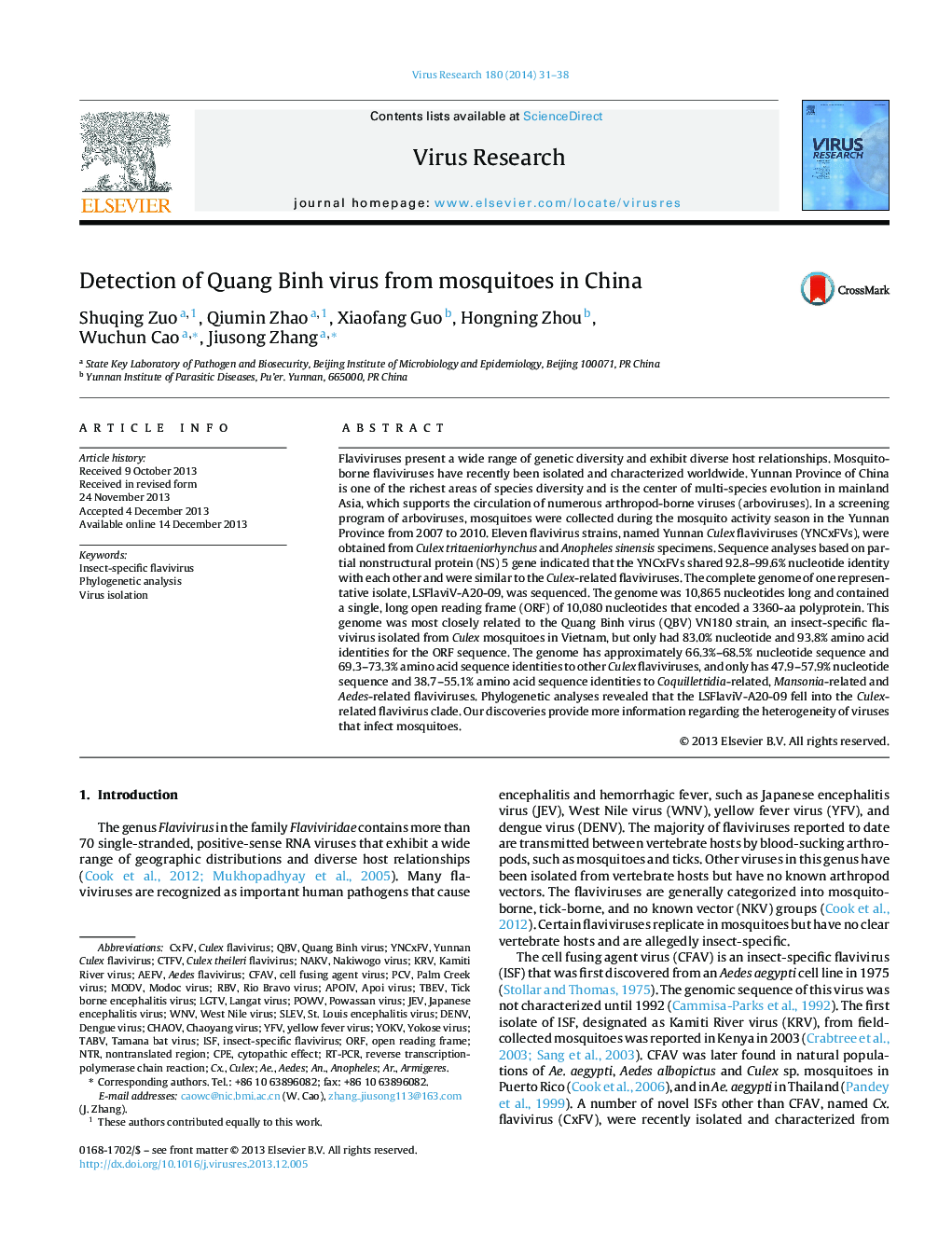| Article ID | Journal | Published Year | Pages | File Type |
|---|---|---|---|---|
| 6142565 | Virus Research | 2014 | 8 Pages |
â¢We isolated 11 flaviviruses from Culex tritaeniorhynchus and Anopheles sinensis.â¢Sequence analyses indicated the isolates were divergent from published flaviviruses.â¢The isolates phylogenetically fell into the culex-related flavivirus clade.â¢The findings provide more information regarding the heterogeneity of flaviviruses.
Flaviviruses present a wide range of genetic diversity and exhibit diverse host relationships. Mosquito-borne flaviviruses have recently been isolated and characterized worldwide. Yunnan Province of China is one of the richest areas of species diversity and is the center of multi-species evolution in mainland Asia, which supports the circulation of numerous arthropod-borne viruses (arboviruses). In a screening program of arboviruses, mosquitoes were collected during the mosquito activity season in the Yunnan Province from 2007 to 2010. Eleven flavivirus strains, named Yunnan Culex flaviviruses (YNCxFVs), were obtained from Culex tritaeniorhynchus and Anopheles sinensis specimens. Sequence analyses based on partial nonstructural protein (NS) 5 gene indicated that the YNCxFVs shared 92.8-99.6% nucleotide identity with each other and were similar to the Culex-related flaviviruses. The complete genome of one representative isolate, LSFlaviV-A20-09, was sequenced. The genome was 10,865 nucleotides long and contained a single, long open reading frame (ORF) of 10,080 nucleotides that encoded a 3360-aa polyprotein. This genome was most closely related to the Quang Binh virus (QBV) VN180 strain, an insect-specific flavivirus isolated from Culex mosquitoes in Vietnam, but only had 83.0% nucleotide and 93.8% amino acid identities for the ORF sequence. The genome has approximately 66.3%-68.5% nucleotide sequence and 69.3-73.3% amino acid sequence identities to other Culex flaviviruses, and only has 47.9-57.9% nucleotide sequence and 38.7-55.1% amino acid sequence identities to Coquillettidia-related, Mansonia-related and Aedes-related flaviviruses. Phylogenetic analyses revealed that the LSFlaviV-A20-09 fell into the Culex-related flavivirus clade. Our discoveries provide more information regarding the heterogeneity of viruses that infect mosquitoes.
